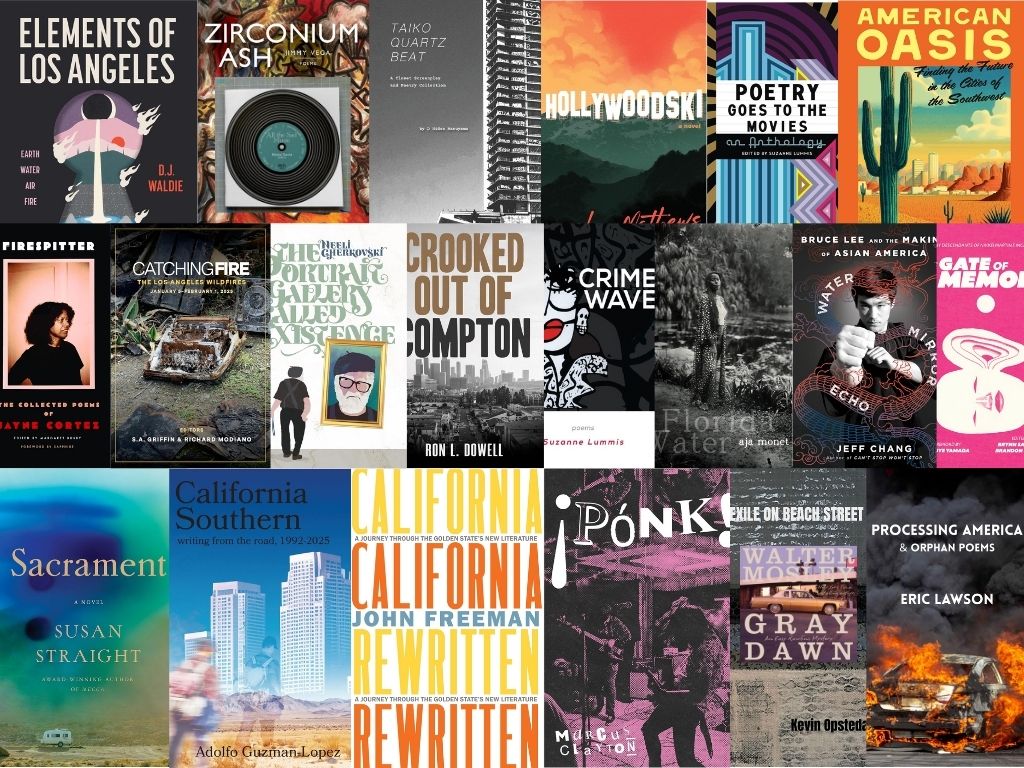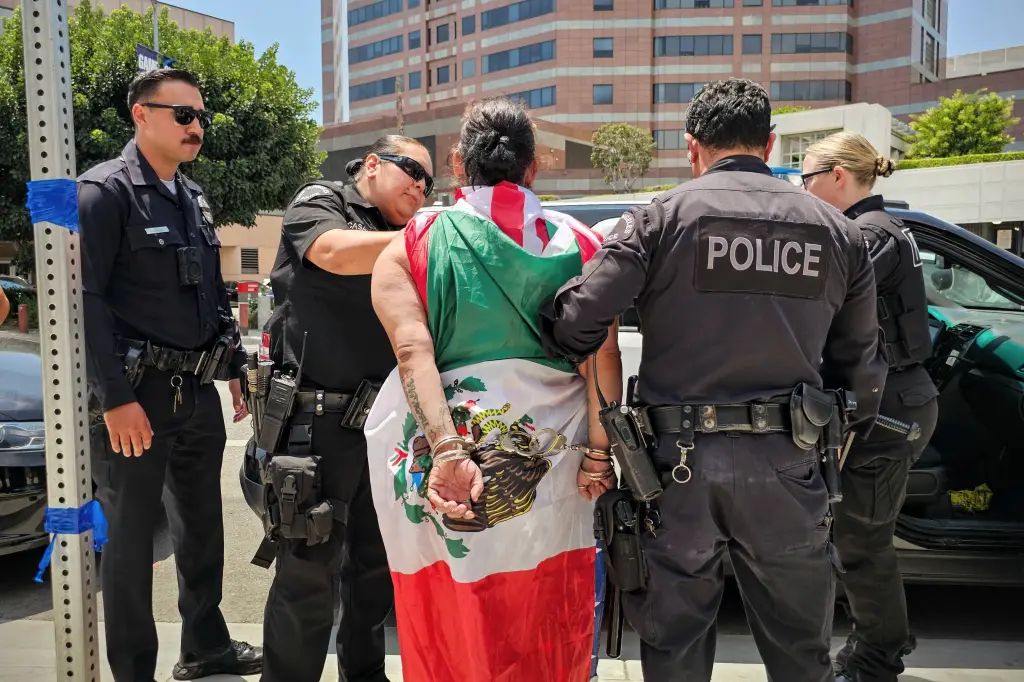At long last, the Regional Connector is opening! After being under construction for nearly a decade and going through many delays, Angelenos will finally be able to take advantage of the new subway tunnel on June 16.
However, most people are confused about what exactly is changing. Even people who regularly use transit and are aware that something Metro-related has been being built Downtown isn't quite sure how it will work once it's open, let alone how it will benefit them.
What's Changing?
The first thing that needs to be clarified about the Regional Connector is that it's not a new line (although there are new stations) but rather a reconfiguration of existing lines. So, let's start with a handy diagram to illustrate the changes.
Until now, the Blue and Expo Lines have come up from the south and terminated at the 7th/Metro station. The Gold Line cut across the northeastern corner of Downtown, stopping at Union Station and Little Tokyo. If you wanted to transfer between these lines, you had to transfer to the Red/Purple Lines and ride those across Downtown. This process can add up to 20 minutes to your travel time.
But now, with the completion of the Regional Connector, the Blue, Expo, and Gold Lines have been combined into two lines: the A LINE will go directly between Long Beach and Azusa, and the E LINE will go directly between Santa Monica and East L.A. Not only is Downtown more accessible but trips across Downtown that previously required two transfers can now be done with only one or even no transfers.
If you live or work along the Blue, Expo, or Gold (now the A & E) Lines, this represents a massive opening up of the city to you. Do you live in Watts and want to go up to Pasadena? Now it's a one-seat ride, no transfer required. Are you in Boyle Heights and feel like going to the beach? Santa Monica is a direct connection. Live in Highland Park and commuting to USC? Only one transfer will be required, and an easy one at that. Just like how the Red and Purple Lines share track and stops in Downtown, the A & E will do the same between Little Tokyo and Pico stations, meaning you won't even have to leave the platform to switch between trains.
If you're a transit user in Los Angeles, this could be huge for you. It means fewer transfers, less waiting, faster service across town for tens of thousands of current riders, and untold numbers of future riders. Trips you wouldn't even consider making by transit will suddenly become feasible, and long trips that people endure now will be much faster.
What About the New Stations?
Of course, not only are crosstown trips being made easier, but it's also going to be easier for riders to get into Downtown itself. There are three new stations along the Regional Connector: Grand Av Arts/Bunker Hill, Historic Broadway, and Little Tokyo/Arts District. Here, we'll cover where they’re located and what you can see at each one.
The Grand Av Arts/Bunker Hill Station is located at 2nd & Hope Street, directly behind the Walt Disney Concert Hall and The Broad. A pedestrian bridge over Hope will connect the station to the shady plaza next to The Broad, a popular contemporary art museum housed in a gleaming white, honeycomb-like structure. The Broad is very popular with influencers, given its many colorful works by some of the most famous artists of the last sixty or so years. Admission is free, although reservations are required through their website, and some special exhibits charge money.
Next door to The Broad is the Walt Disney Concert Hall, among the most iconic buildings in the city and one of Frank Gehry's most famous designs. A hidden feature of the building is the public garden perched on the back, providing access to the observation platforms tucked into the front of the building. To get there, you just have to go up the stairs on the corner of the building facing 2nd & Grand (sometimes the garden will be closed for an event, but if the gates at the top of the stairs are open, you're free to go in!). Inside you'll find a lovely lush garden with views to the west, a mirrored facade popular with photographers, and a beautiful tile fountain built in the shape of a flower. And if you poke around, you can find the winding stairway that leads up and around the front of the building, with some great views over downtown.
Just a little way down Grand and across the street from The Broad is the decidedly understated Museum of Contemporary Art (MOCA). Although it's also free, MOCA draws a much quieter crowd than The Broad, with its subterranean galleries holding changing exhibits representing various artistic figures and movements from the 1950s to the present. Behind MOCA, the little plazas and walkways lead south to the California Plaza office complex, you'll find the top of Angels Flight. This charming orange cable car dates back to 1901 when Bunker Hill was a quiet residential neighborhood overlooking Downtown.
Historic Broadway Station is located at 2nd & Broadway, on the border between the civic center district and the historic core of Downtown along Broadway. A few blocks north is Grand Park and City Hall, which holds a little-known observation deck on the top floor that you can access during regular government business hours. You have to enter City Hall from the Main Street side and go through a security checkpoint, but then just tell the security guard you're visiting the observation deck, and they'll give you the directions. It's free, and the views from the top are fantastic. On your way out, exit on the 3rd floor to admire the majestic rotunda before stepping out onto Grand Park.
The Bradbury Building, at the corner of 3rd & Broadway, is the most famous structure, with its stunning interior court illuminated by a skylight. It's still a functioning office building, so visitors aren't allowed past the ground floor, but it's worth the look. Generally, it's only open during weekday office hours, with limited weekend hours.
Right across the street from the Bradbury is Grand Central Market, Downtown's much-beloved food hall always packed with people. It's not the authentic produce market that it was in decades past; the grocers and carnicerías have given way to trendy eateries, but you'll still find plenty of tasty food amidst all the neon signage. Sarita's Pupuseria and Jose Chiquito are two solid stand-bys. There are also newer vendors like Lucky Bird with their massive chicken sandwiches and For The Win's excellent smash burgers. Wherever you go, expect long lines and tourist prices, but you'll surely find something you like.
A very hidden feature in the neighborhood is Biddy Mason Park, a small plaza tucked between Broadway and Spring Street just south of the Bradbury Building, behind the Maccheroni Republic restaurant. In the plaza, you'll find a mural paying tribute to Biddy Mason, a formerly enslaved person who escaped to Los Angeles in the 1850s and became a beloved figure in the community, working as a nurse and midwife and founding a school and a church for the city's African American community. The mural tells her life story, with historic photographs and artifacts embedded in the wall.
The Little Tokyo/Arts District Station has been rebuilt underground, located on 1st between Alameda and Central, replacing the old Gold Line stop across the street. The new station is much more accessible to Little Tokyo, across the street from the neighborhood's most popular attractions. We'll list our favorites here, but the Go Little Tokyo website is a good resource for upcoming events and many of the district's delightful local businesses.
Directly across 1st Street just to the north is the Japanese American National Museum, which has an excellent exhibition upstairs on the history of the Japanese American communities of Southern California, with extensive exhibits and artifacts related to the internment of Japanese Americans during WWII. The museum also frequently has excellent changing exhibitions on Japanese American history and culture. Current admission is $16, with discounts for students, seniors, and children.
Continuing up the plaza past the museum will lead you to the Geffen Contemporary, a secondary location of MOCA held in an old warehouse that often hosts large-scale art installations and exhibitions. In front of the Geffen is the Aoyama Tree, a massive fig tree planted in 1920 on what at the time was one of the oldest and largest Buddhist temples in Los Angeles. And further up the plaza, just past the Geffen, is the Go For Broke Monument, a memorial to the Japanese Americans who fought in WWII on behalf of the United States, despite everything their government had put them through.
Across Central Avenue from the station is the Japanese Village Plaza, a cute outdoor mall with Japanese architecture. The main entrance, just around the corner on 1st Street, is marked by a bright red tower, a replica of a traditional Japanese fire watch tower. The mall is lined with Japanese-themed shops and restaurants, and you can expect to find it packed on the weekends. Grab yourself a coffee or a pastry at Cafe Dulce, or get one of the very cheap and tasty steamed buns from Yamazaki Bakery. There's also a passageway from the Village Plaza into the underground Little Tokyo Mall next door, where you'll find Jungle. This massive anime collectibles store occupies several storefronts in the mall: one specifically for action figures, another for cosplay, another for trading cards, and another for general merchandise.
The stretch of 1st Street west of the station is the historic heart of Little Tokyo, with the buildings on the north side of the street predating the internment of the WWII years. Among the shops here is Little Tokyo's oldest business, Fugetsu-Do Sweet Shop, a family-owned confectionary dating back to 1903 that sells mochi and other tasty Japanese treats. Another long-standing family business is Bunkado, which has been selling gifts and Japanese crafts since 1946 and has a nice selection of ceramics, books, kitchen goods, paper crafts, and Little Tokyo products.
And, of course, the neighborhood is full of great places to eat. Right around the corner from the station on Central Ave is Shin-Sen-Gumi Hakata Ramen, a very popular place (expect a long wait for a table) that serves a very flavorful bowl of ramen. Just up 1st Street is Daikokuya, Little Tokyo’s other famous ramen shop (expect even longer waits). Next door, newcomer Kaminari Gyoza has already attracted a following for its delicious fried gyoza. Right across 1st St, Okayama Kobo Bakery inside the Miyako Hotel serves good coffee and very cute pastries, while around the corner on Judge John Aliso Street is JiST Cafe, which serves classic breakfast dishes with an Asian twist (the Chashu Hash is the highlight here). And in the evening, Far Bar is a great place to grab a drink before hopping back on the train, with pretty good bar food and a nice outdoor seating area in a brick-walled courtyard.
It's been a long time coming, but having this tunnel stitch together the far-flung reaches of our transit system should prove worth the wait. All the talk of "connecting communities" isn't just empty rhetoric here; for many of L.A.'s transit riders, this sprawling city will get much easier to navigate.







